Stargate Studios is handling the visual effects for The Walking Dead, AMC’s new TV series based on Robert Kirkman’s zombie apocalypse comic and directed by Frank Darabont. We take a look at some of Stargate’s zombie enhancement and virtual set work for the pilot episode.
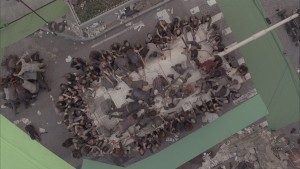
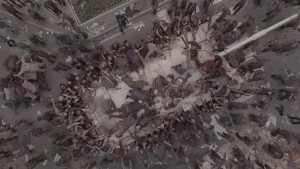
To realise the hundreds of zombies that terrorise a few remaining survivors of the apocalypse, the production relied on make-up designs and practical appliances created by KNB EFX Group under make-up effects veteran Gregory Nicotero. “Greg’s make-up effects work is absolutely remarkable,” says Stargate Studios visual effects supervisor Sam Nicholson. “But if you’re going to do a scene with 300 zombies, you can only go so far, particularly on a budget. The purpose of our visual effects is really to blend seamlessly into Greg Nictotero’s work. The hero zombies in the foreground are typically Greg’s and the extras and the swarms of zombies in the background are generally extended by us.”
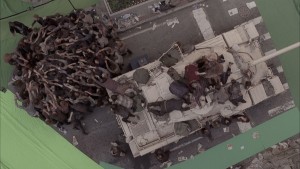
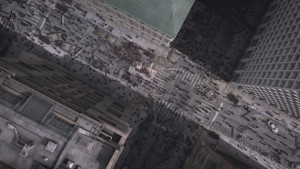
Stargate’s CG zombie extras were derived directly from the on-screen zombies, both in terms of the actors and make-up effects. “We mo-capped our hero zombie actor, who was the fellow with the longish hair who wakes up in the bus first,” explains Nicholson. He was the best zombie actor, so we mo-capped him doing various moves. Then we scanned probably every single zombie that Greg made. So now we had all the eyes and pieces and everything to basically make a zombie kit, which we could also enhance in an impossible way with missing jaws or noses.”
Occasionally, zombie replacement was necessary where a zombie actor was not quite performing the scene as required. “You’re running and gunning on the set,” notes Nicholson, “and sometimes there’s a zombie in the background that wasn’t acting properly – he wasn’t listening in zombie school. So we’d replace a few of them with CG zombies that acted better. We now have a library of about 50 CG zombies that can be dropped into any scene.”
Stargate’s digital augmentation can also be seen up close in a number of shots, such as for ‘torso girl’, a lone zombie with no legs encountered early on by the main character, Rick. “They cast a very spooky looking and incredibly thin lady for the character,” says Nicholson. “Greg did a remarkable job on her facial make-up. She was shot with blue spandex legs because her spine and all of her intestines had to be connected and trailing her across the ground. So we did these in CG, along with re-animating the grass and blending into the practical work.”
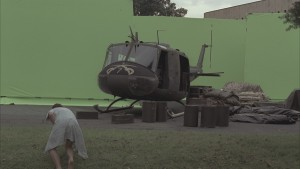
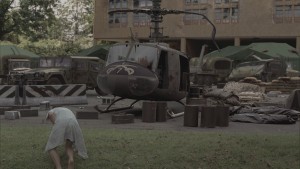
Further enhancement to the zombie scenes included blood and bullet hits. For a shot of Rick shooting his former lieutenant in the head, Stargate was able to dial-in the desired level of violence. “It’s right on the edge of being impossible,” says Nicholson, “although we didn’t want to blow the whole back of his head off. It’s like finding focus – you’ve got to go through it and come back to find exactly where will people feel this is real and not a digital effect. Too much blood looks like something fake, and too much red looks too physical.”
Set extensions and environments also made up a large part of Stargate’s work. The shot of Rick on a horse heading into a deserted Atlanta is a combination of a greenscreen car park shoot and a matte painting to remove any signs of life. Notes Nicholson: “Creating an abandoned city is a bit of trick because there’s always streetlights and traffic. We had to take out any scenes of living people other than our people. We had to remove stop lights, create debris blowing around on the highway and add in ravens and other birds.
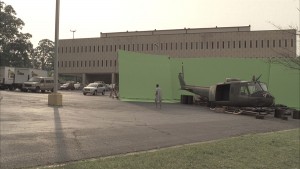
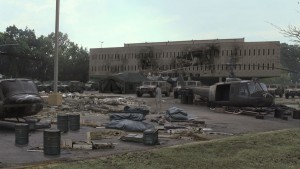
As Rick leaves hospital early in the pilot episode, he sees hundreds of dead bodies lined up outside – a digital extension – and then stumbles into an abandoned army encampment. “That was shot in front of a greenscreen and filled in with a virtual set,” remarks Nicholson. “We added a lot of digital helicopters and Humvees, which we could then use later for other scenes in Downtown Atlanta.”
The Downtown area was realised as another virtual set for a pull-back shot of zombies massing towards a tank. “The only thing that is real in that shot is the tank and the zombies that are around it,” says Nicholson. Having built the area in detail, based on photographs and a survey of the real shoot, Stargate plans to re-purpose it for future episodes. “We’ll be able to go back in and re-use the set and the zombies and give a lot more creative options to directors. So if you want say 500 zombies in a scene, you may only have to go out with two or three zombies, and we can do the rest. It just gets better as the series progresses, and we can continue to build the backlot assets for future episodes.”
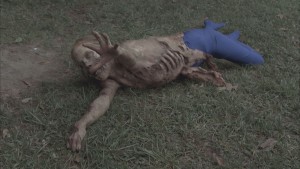
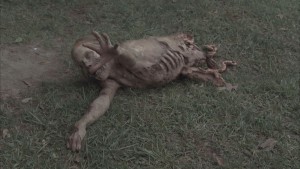
Stargate relied mostly on Maya and After Effects for its digital work, as well as Lightwave, 3ds Max and Photoshop. Production was co-ordinated amongst its US, Canadian and Indian offices using the studio’s visual operating system to tie everything together. This enabled artists to meet tight turnarounds and offer effects as a way of speeding up production. “We like to use visual effects to save a production money,” says Nicholson. “For instance, the shot of Rick on the horse was just quickly shot on greenscreen. It was in a parking lot right next to another shoot which was convenient and could be done in a matter of an hour, which let the company move on, as opposed to having to shut down a freeway.”
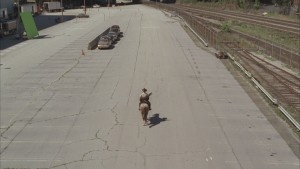
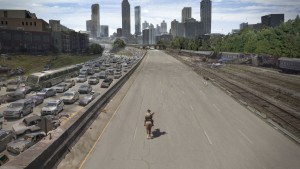
Still, the intention was always to ensure that no one would know there were any visual effects done for the show. “We wanted there to be no digital fingerprints,” says Nicholson. “That can be on a creative level too, because even if you can’t see any seams in it, you’re like, ‘Oh that can’t be real’. I mean, visual effects are like a car that you can make go as fast as you want to go, they can be as gaudy as you want them to be. But by asking, ‘How big do you want the blood hit? How much of this guy’s head do you want to blow off?’, it can done tastefully, and it looks real that way. And the audience responds to that more positively.”
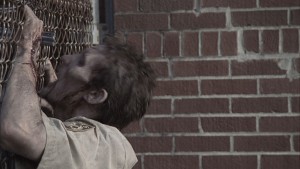
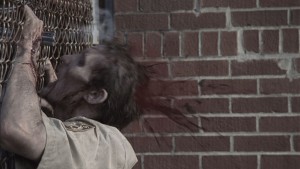
It helps, too, that many of the artists at Stargate were already Walking Dead fans. “It’s funny,” says Nicholson, “we have coffee and croissants here every morning and everyone’s looking at people’s heads being blown off. It’s a pretty unique way to start the day.”
